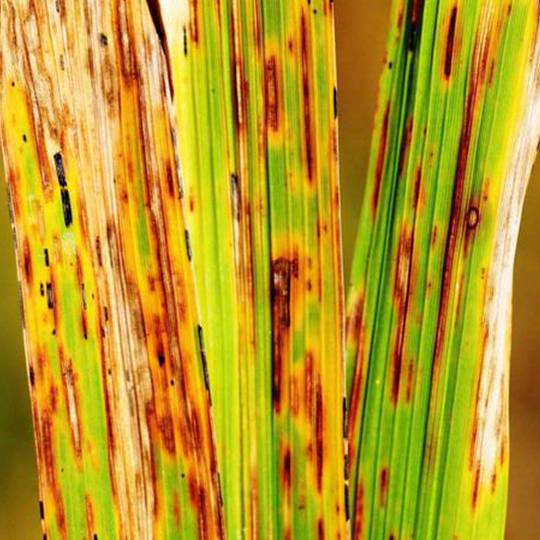
Grasses most commonly affected: bluegrass (especially Kentucky bluegrass), Bermudagrass.
Leaf spot (drechslera, bipolaris, exserohilum), or “melting out” disease takes the form of brown or black spots on grass blades. During infestation, these spots widen and develop tan centers, killing the grass blade above its root. This can be followed by a process known as a “melting out” phase.
The group of fungi that causes the “leaf spot” class of lawn disease was formerly referred to as helminthosporium. The fungi that cause leaf spot are individually known as bipolaris, drechslera, and exserohilum.
Leaf spot usually affects bluegrass when the weather is hot and humid. Bermudagrass is mostly affected by leaf spot when the weather is cool and damp. The disease began in grasslands, where taller grasses were more resistant to the damage caused by leaf spot.
Leaf Spot Signs and Symptoms
Leaf spot initially resembles drought or insect damage, and it can be difficult to tell the difference. This can pose a problem, though, because while watering a lawn damaged by a can improve its health, watering a lawn with leaf spot can encourage the disease to spread.
Leaf spot grows in random patterns on lawns, not in any particular, recognizable shapes. It is most active on bluegrass lawns in the summer and on Bermudagrass lawns in the spring and fall. When the infection spreads to the roots grass blades, the “melting out” phase occurs. This phase occurs when the roots and crowns of the grass rot and a reddish mold appears.
Leaf Spot Prevention
Leaf spot can be prevented by ensuring that you don’t cut your grass too low. Long, thick-bladed grass is more resistant to damage to the grass blades. Adding nitrogen to soil during a leaf spot infection can entirely kill an area affected by leaf spot. Avoid overwatering infected grass and aerate the soil in order to promote water drainage during rainy conditions.
Fungicides are an option for treating leaf spot, but they are only effective when applied to infected lawns during the disease’s initial stage. If a fungicide is applied during the “melting out” stage, it will have little to no effect. Optimally, fungicides should be applied once in the early spring and again in late spring.
Contact the experts at Cardinal Lawns to discuss your options for preventing disease and making your lawn look its best.
Need Help with Leaf Spot?
Call Cardinal Lawns today at 614-808-4446 and let's talk about how we can help treat for Leaf Spot and other common Ohio lawn diseases.
Get a Free Quote